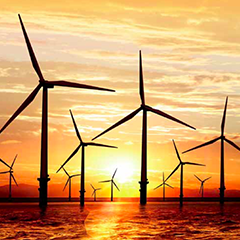The use of wind power either at or near where it is generated – as opposed to energy from wholesale generation – is growing at a phenomenal rate, particularly in North America. We take a look at the latest figures.
In the last 12 months, 30.4 megawatts (MW) of new distributed wind capacity was added, representing nearly 2,700 units across 36 states, Puerto Rico, and the U.S. Virgin Islands (USVI). Since 2003, nearly 72,000 wind turbines have been deployed in distributed applications across all 50 states, Puerto Rico, and the USVI, totalling 842 MW in cumulative capacity. The 83% decline from 2012 to 2013 of distributed wind capacity additions is in line with the 92% decline from 2012 to 2013 in overall U.S. wind capacity deployed.
To compensate for weaker domestic sales, U.S. small wind turbine manufacturers shifted their focus to growing international markets. Exports from U.S.-based small wind turbine manufacturers increased 70% from 8 MW in 2012 to 13.6 MW in 2013. U.S. small wind turbines were exported to more than 50 countries in 2013, with top export markets identified as Italy, UK, Germany, Greece, China, Japan, Korea, Mexico, and Nigeria. In 2013, 76% of U.S. manufacturers’ new small wind sales capacity went to non-U.S. markets, a substantial increase from 57% in 2012.
Distributed wind is defined in terms of technology application based on a wind project’s location relative to end-use and power-distribution infrastructure, rather than on turbine or project size. While the distributed wind market includes wind turbines and projects of many sizes, the market is broken into two segments when appropriate: wind turbines up through 100 kW (in nominal capacity) referred to in this report as “small wind,” and wind turbines greater than 100 kW used in distributed applications.



























